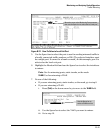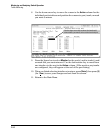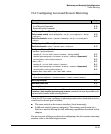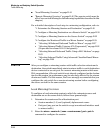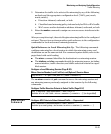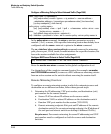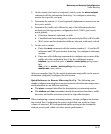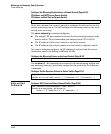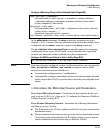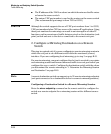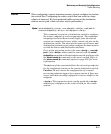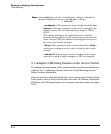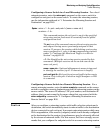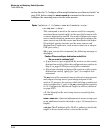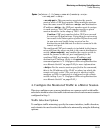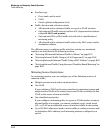
Monitoring and Analyzing Switch Operation
Traffic Mirroring
Configure a Mirroring Policy to Select Inbound Traffic (Page B-66)
class < ipv4 | ipv6 > < classname >
[no] [seq-number] < match | ignore > < ip-protocol > < source-address >
< destination-address >
[ precedence precedence-value ] [ tos tos-value ]
[
ip-dscp codepoint ] [ vlan vlan-id ]
policy mirror < policy-name >
[no] [seq-number] class < ipv4 | ipv6 > < classname > action mirror <session>
[ action mirror < session > ... ]
[no] default-class action mirror < session >
[no] < interface < port/trunk > | vlan < vid-# >> service-policy
<mirror-policy-name> in
In the policy mirror command, the mirror < session > parameter accepts a
number (1 to 4) or name, if the specified mirroring session has already been
configured with the name < name-str > option in the mirror command.
The no < interface | vlan > service-policy in command removes the mirroring
configuration from a port, VLAN, trunk, or mesh interface for a specified
session, but leaves the session available for other assignments.
Configure the MAC-based Criteria to Select Traffic (Page B-63)
[no] monitor mac < mac-addr > < src | dst | both > mirror < session >
Note If you have already configured session 1 with a destination, you can enter the
vlan < vid > monitor or interface < port > monitor command without traffic-
selection criteria and session identifier to:
■ Overwrite the existing session 1 configuration.
■ Automatically configure mirroring in session 1 for inbound and outbound
traffic on specified VLAN or port interfaces with the preconfigured desti-
nation.
1. Determine the Mirroring Session and Destination
For a Local Mirroring Session. Determine the port number for the exit
port (such as A5, B10, etc.), then go to “4. Configure the Monitored Traffic in
a Mirror Session” on page B-55.
For a Remote Mirroring Session. Determine the following information
and then go to step 2, below.
■ The IP address of the VLAN or subnet on which the exit port exists on the
destination switch
■ The port number of the remote exit port on the remote destination switch
(In a remote mirroring endpoint, the IP address of the exit port and the
remote destination switch can belong to different VLANs.)
B-49



